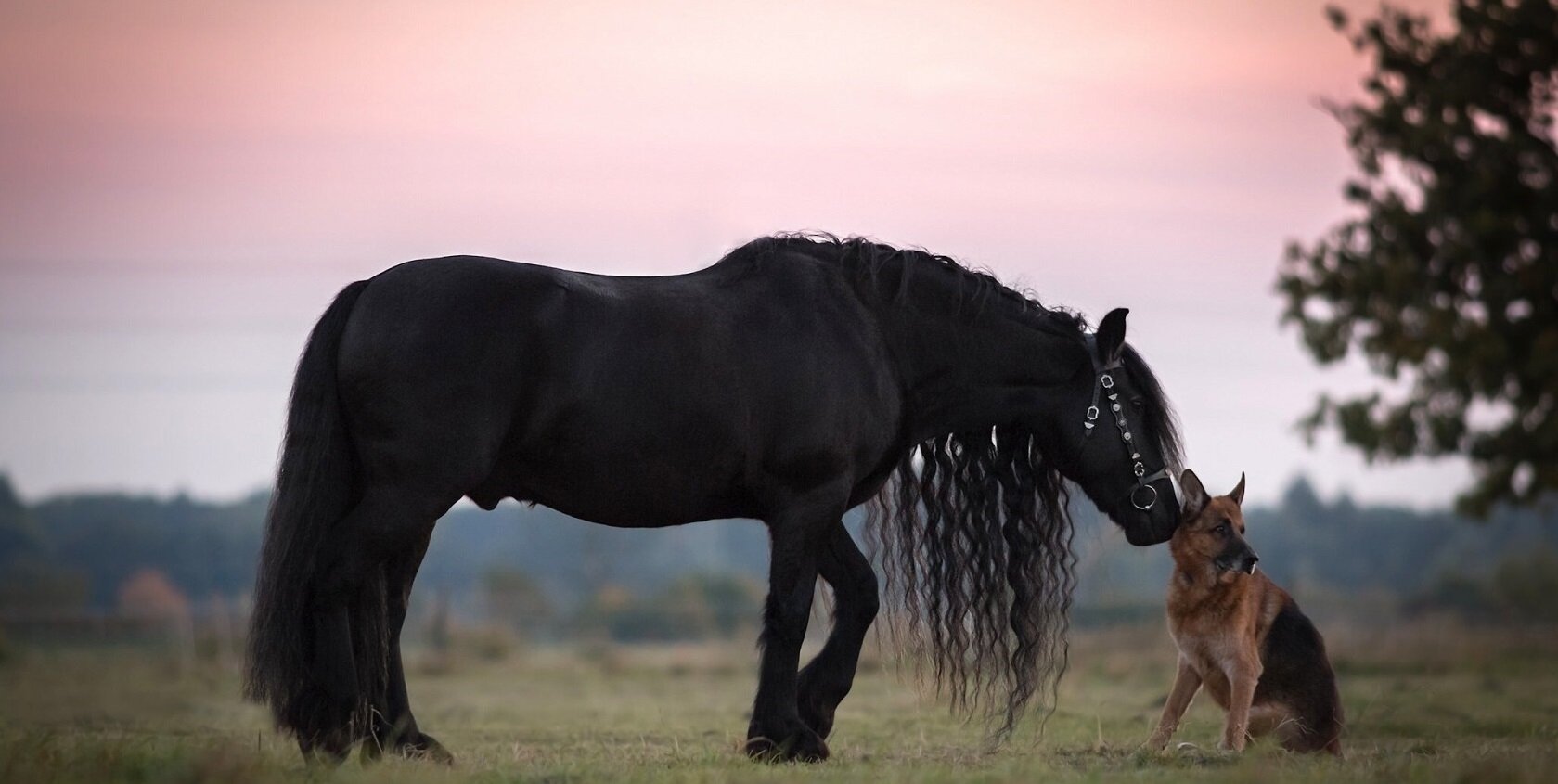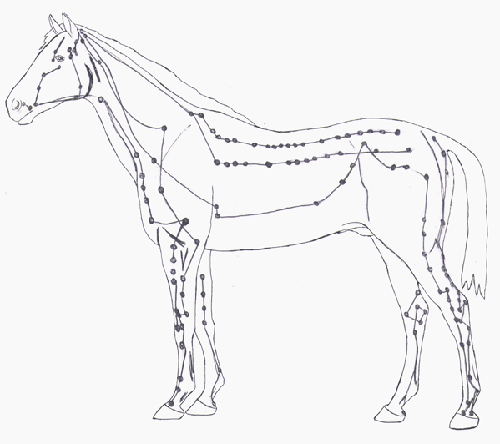Horses experience back pain.
But what causes it, how do you recognize it, and what can you do about it?
Horse Back Pain.
Understanding where the back pain is straight forward enough. However, discerning the reason for the pain is another matter all together.
Certainly, the diagnosis of Horse Back Pain can be skewed if the back pain is really a result of other soreness in the horse’s body. The goal of any pain management system is to reveal the primary source so that it can be successfully treated and consequently relieve the pressures to the equine.
An examination will start with your animal’s history and location. You will find that the examination will cover all aspects of your horse.
In human medicine, back pain is considered misunderstood. Logic suggests that it would be even more difficult to diagnose and comprehend back pain in animals like horses. Not only is it impossible for a horse to let you know when he is feeling pain, but horses are so large, and their anatomy so complicated, that their inner workings may not be able to even be seen by modern x-ray or diagnostic technologies.
Defining Horse Back Pain.
The potential causes of horse back pain can be broken into two groups - primary and secondary back pain.
The primary pain source is the point where the pain is being caused. The secondary source is the point where the pain has manifested due to another ailment within the horse’s body.
Pain can also be acute or chronic.
Acute pain is soreness which will generally respond to simple changes to a condition. Chronic back pain is soreness which is recurring over a period of time and is considered long term damage. Chronic pain is no longer just a symptom of the problem but is an actual illness by itself.
A few of the causes of Horse Back Pain..,
• Lesions in the skin, connective tissues (Fascia), nerves, muscles, joints and bones in the horse's back. The most common cause for these lesions is traumatic injury, but these problems can also be a result of poor tack fit or issues relating to the technique of the rider which can actually worsen these problems significantly.
• An underlying lameness. Lameness in the hind limbs or any lameness in the horse's anatomy can result in horse back pain. However, because the limbs in the back are linked together in terms of function it is one of the more common causes. Common sense make you think, that if one of the aspects of the horse's physiology is not functioning in the right way, then the other aspect of the horse's anatomy is not likely to function as a consequence.
• A poorly fitted saddle - It is important for saddles and other tack to fit properly. A properly fitting saddle needs to conform properly to the shape of the horse's back without creating any undue pressure points.
• Bridles and bits - When bridles or bits are adjusted or fitted improperly, the horse may naturally resist the bit. This will cause the horses back to be flattened or hollowed, which over the long term may reduce his ability to perform properly and lead to soreness of the horse’s back .
• Sore or problematic feet including improper shoeing
• Poorly conditioned horse
• Muscle damage
• Injury or accident
• Spinal cord disease
• Holding muscles or structure in an unusual position for long lengths of time
• Dental Problems
Recognizing Horse Back Pain..,
This is a list of possible characteristics you may see if your horse is experiencing back pain. However, this list should not be considered complete.
• Reduced performance or reluctance to be handled all together
• Behavioral problems like bucking or rearing
• Soreness to the touch when pressure is applied on the back
• Resistance to saddling
• Difficulty shoeing
• Biting
• Hollowed out back
• Atrophied Muscle groups
• Restlessness
• Depression
• Rigid stance
• Flared nostrils
• Glassy eyes
• Alterations in weight bearing
• Head and neck in a fixed position
• Abnormal gait
• Changes in food and drink
• Change in social behaviors and outside stimuli
Ways to diagnosis Horse Back Pain..,
Because the horse's muscles are so thick and heavy, veterinary examination and diagnosis of horse back pain can be difficult.
The cornerstone of diagnosis for horse back pain is still diagnosis via physical examination of the horse both during rest and in movement.
Treatment of Horse Back Pain
There are many different therapies that can be used. Such as Bowen therapy, acupuncture / acupressure
Equine Bowen Therapy is a muscle release therapy that is highly effective in the treatment of a wide range of acute and chronic conditions covering both physical issues in horses. The Bowen technique is a gentle yet powerful non-invasive technique that addresses the whole body, it is believed to work primarily through the nervous system on both structural and energetic levels which enables the body to correct dysfunctions and restore homeostasis (balance) of all the bodies systems, it stimulates the body’s self-healing abilities and repair mechanisms and can assist in the relief of pain, discomfort and behavioural issues bringing about improved health and wellbeing.
Bowen Therapy is a hands-on myo fascial release technique where the therapist applies a series of two directional cross fiber manoeuvres using fingers and thumbs on precise points on the body in a rolling action over specific muscles, tendons, ligaments, and fascia which separates the glue fibers. The therapist will incorporate resting periods in between a sequence of moves to allow the body to absorb the information and respond accordingly.
The Bowen move disturbs the delicate fascia underneath the skin and vibrations send neurological messages to the brain via the nervous system to remind the body to re-balance itself and to relax the muscles and regain normal movement in joints, muscles, tendons and ligaments allowing the body to adjust itself and begin the process of healing.
Bowen Therapy also works on an energetic level. Several of the Bowen moves are located along acupuncture meridians or on specific acupuncture points that are known to stimulate and balance the body’s energy. In Tradition Chinese medicine (TCM), meridians are invisible pathways or channels of energy known as Qi pronounced “Chi” that flow through the body. Our vital energy, or Qi is thought to flow along these meridians and is believed to correspond with every organ in the body. Any disruption with the smooth flow of Qi like a muscle spasm for example, is said to block the flow of energy that runs through that meridian and disease can penetrate the body causing imbalance and illness.
Bowen Therapy enables the body to heal and repair itself at all levels as needed. The key principles are based on all parts of the body functioning together. If one part of the body is restricted, then the rest of the body must adapt and compensate for this, eventually leading to inflammation, pain and discomfort, restriction in movement, stiffness and other health conditions.
Acupuncture points and acupressure points are the same. These are sites on the body that we can stimulate or press to produce a physiological response. “It might be over a muscle, nerve, or blood vessel.
There are nerves, blood vessels, etc. beneath the dots and lines of ancient charts showing acupuncture points and channels. “That knowledge, coupled with background in anatomy and physiology, takes the guesswork and mystery out of acupuncture. The body reacts in predictable ways when acupuncture is used to relieve pain, relax muscles, improve digestion and dissipate stress,
Acupuncture much like bowen therapy affects the nervous system by changing levels of neurotransmitters and how the nerves respond to pain. It also relaxes muscles and improves circulation.
Using these therapies helps horses maintain optimal health and longevity. Call AMRT for further information


